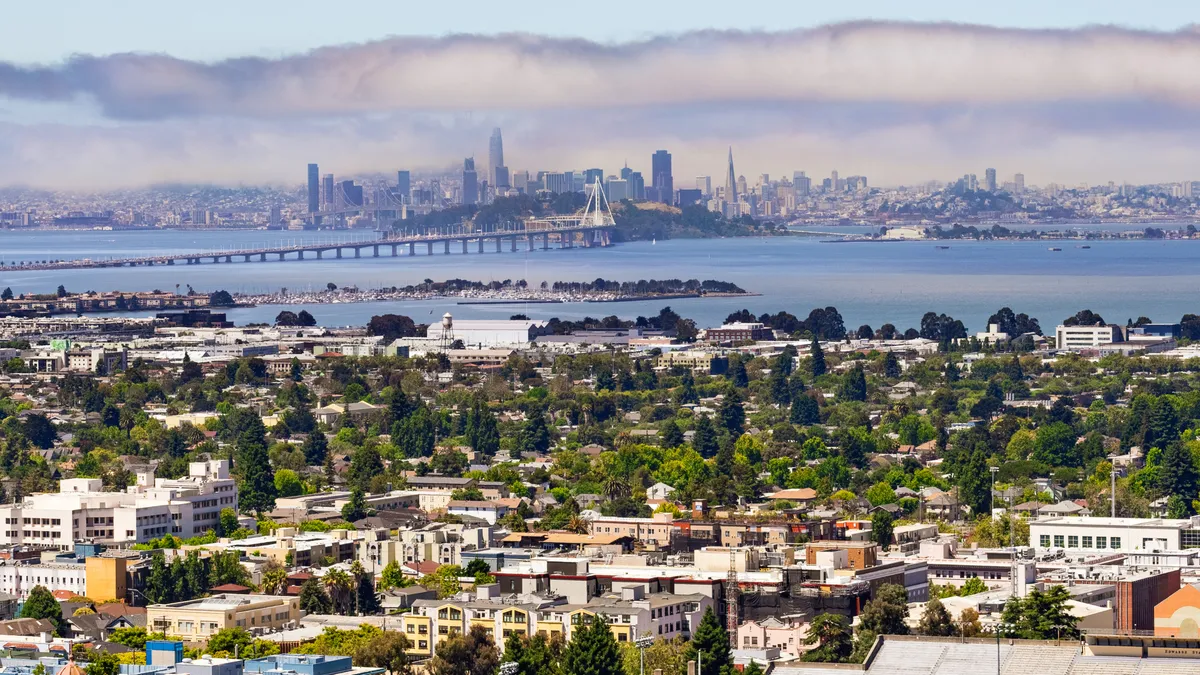Dive Brief:
- A large portion of California’s proposed “strategic electricity reliability reserve” – a 5,000 MW pool designed to help the state bolster its power grid – could be natural gas-fired generation, state regulators said at a briefing Thursday.
- Gov. Gavin Newsom, D, allocated $5.2 billion to the electricity reserve in a revised budget proposal released in May, to ensure electric reliability at times when the grid is especially stressed.
- “The current thinking is around incremental capacity at existing gas power plants,” California Energy Commission Vice Chair Siva Gunda said Thursday. In addition, regulators are contemplating “some levels of temporary gensets that could be multi-fuel … and definitely holding on to at-risk-of-retirement resources that are thermal in nature,” he added.
Dive Insight:
California’s energy system is facing a host of simultaneous challenges. While the state has added more than 4 GW of net qualifying capacity since last summer — more than 2.7 GW of which is available at 8 p.m., a particularly precarious time for the state’s grid given high electricity demand coupled with waning solar generation — the grid is still vulnerable due to extreme drought, heat waves and other disruptions, California Independent System Operator President and CEO Elliot Mainzer said Thursday.
The grid operator has determined that the state is currently facing an estimated 1,700 MW capacity shortfall compared to meeting industry reliability standards. That figure could be as high as 5,000 MW if California experiences simultaneous extreme events, like regional heatwaves and large wildfires. And these challenges are occurring against the backdrop of several planned retirements, including the 2.2 GW Diablo Canyon nuclear plant and a suite of gas-fired plants in the coming years.
“The bottom line is that despite considerable progress, we continue to face risks to reliability this summer and for the next several years,” Mainzer said.
Newsom’s revised budget proposal included $8 billion for the state’s energy system, including the $5.2 billion electricity reserve. The reserve – a statewide resource capable of providing up to 5,000 MW of emergency generation – will not take the place of power providers’ current procurement obligations.
“It’s very fair to say a large portion of the 5,000 MW of strategic reserve will be gas,” Gunda said.
Of the 5,000 MW, California Department of Water Resources is responsible for arranging for 3,000 MW, while the CEC is responsible for the remaining 2,000 MW.
Regulators are looking for resources that meet certain requirements — for instance, resources available during that 8 p.m. period that can be deployed quickly — which is why the current thinking is focused on additional capacity from existing gas power plants and temporary gensets.
“That will definitely form a bulk of the portfolio, but there’s also a large amount that we expect to come from the distributed-side resources, including the programs for shedding load or load flexibility,” Gunda said.
According to regulators, this reserve will not lead to an erosion of California’s longer-term clean energy goals. For the most part, the agencies are looking at gas units that are operating today to keep the electric system reliable, Karen Douglas, senior energy advisor at the governor’s office, said.
If they are brought into the strategic reserve, “we are actually taking them out of the market where they would run potentially more, and we’re putting them into a status where they are only running when the grid is under stressed conditions and we really need them,” she said.
“We should be really clear here that this is not backsliding on clean energy goals,” California Public Utilities Commission President Alice Reynolds agreed.
Discussions with state lawmakers on the proposed reserve are ongoing, Douglas said, adding that “the proposals that we’re putting forward are foundational to preserving reliability in a way that keeps us moving forward…”
The Natural Resources Defense Council supports the short-term investment of state resources to protect Californians from blackouts and prevent the state from becoming a cautionary tale in the climate fight, Merrian Borgeson, a senior scientist with the organization, said in an email.
“However, this funding needs guardrails to ensure that it is in fact beneficial, and not harmful, to Californians. Investments in clean resources that contribute to our path toward 2030 and 2045 carbon targets, and aren’t solely short term back up, should be prioritized,” she said, adding that any investments that will increase pollution in disadvantaged communities should be last on the list, or even prohibited.














